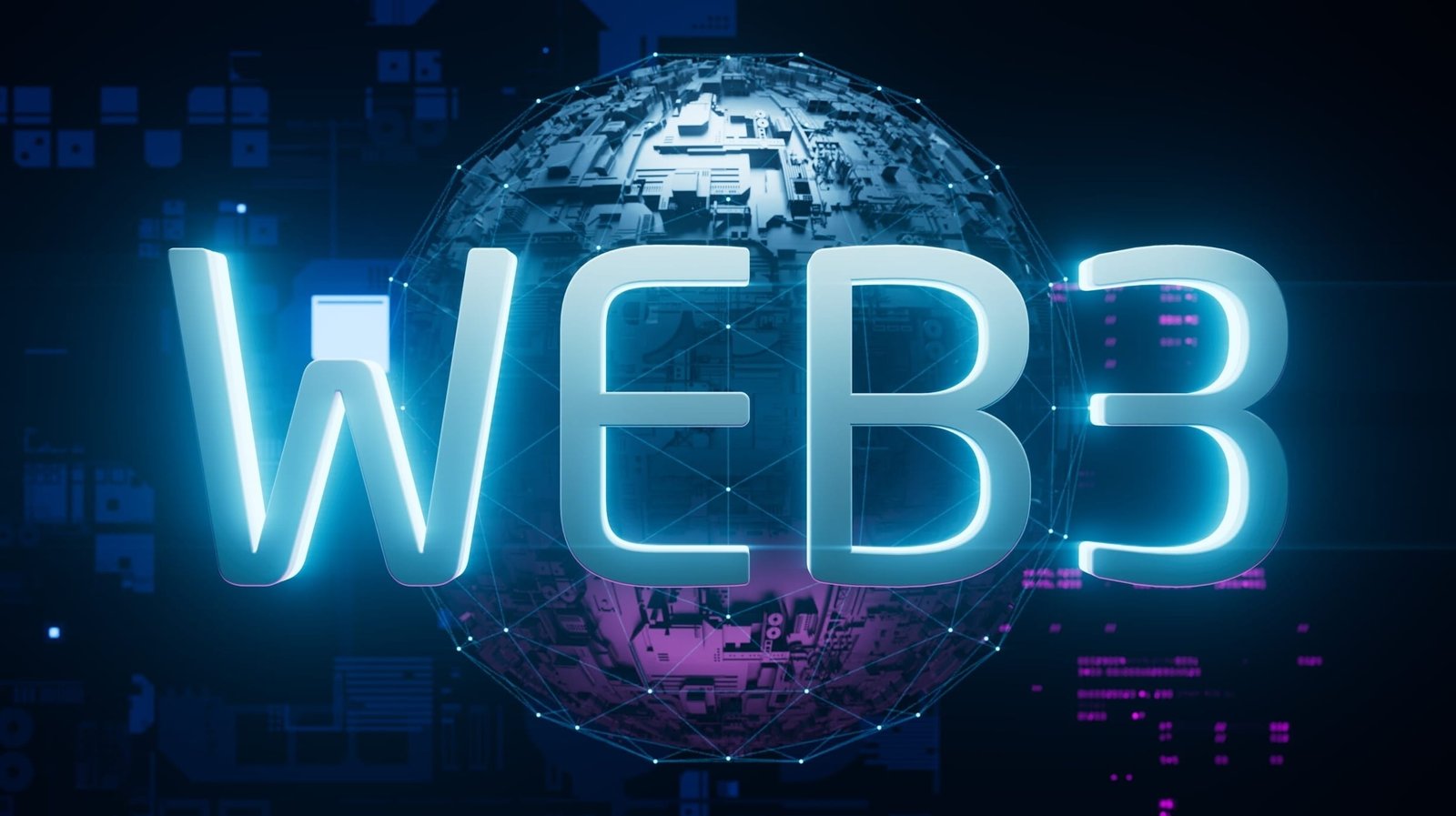The Ultimate Guide to Choosing the Best Web3 Cryptocurrency Investment Platform in 2025

The revolutionary world of decentralized finance has transformed how investors approach digital assets, and finding the right Web3 cryptocurrency investment platform has become crucial for both novice and experienced traders. Unlike traditional centralized exchanges, Web3 platforms offer unprecedented control over your assets, enhanced security through blockchain technology, and access to innovative DeFi protocols that weren’t possible just a few years ago.
As the cryptocurrency market continues to evolve rapidly, selecting a reliable platform that combines cutting-edge Web3 technology with user-friendly interfaces can make the difference between successful portfolio growth and costly mistakes. This comprehensive guide explores everything you need to know about Web3 cryptocurrency investment platforms, from essential features to security considerations, helping you make informed decisions in today’s dynamic digital asset landscape.
What is a Web3 Cryptocurrency Investment Platform?
A Web3 cryptocurrency investment platform represents the next generation of digital asset management tools that leverage blockchain technology to provide decentralized, secure, and transparent investment solutions. Unlike traditional Web2 platforms that rely on centralized servers and intermediaries, these platforms operate on distributed networks, giving users complete ownership and control over their digital assets.
The fundamental difference lies in the underlying architecture. Traditional cryptocurrency exchanges act as custodians of your funds, requiring you to trust them with your private keys. In contrast, Web3 platforms utilize smart contracts and decentralized protocols, enabling you to maintain custody of your assets while accessing sophisticated investment tools and strategies.
Key Characteristics of Web3 Investment Platforms
Web3 platforms typically feature non-custodial wallets, meaning your private keys remain under your control. This approach eliminates counterparty risk associated with centralized exchanges while providing access to decentralized finance (DeFi) protocols, automated market makers (AMMs), and yield farming opportunities.
The integration of blockchain oracles ensures real-time price feeds and market data accuracy, while multi-chain compatibility allows investors to diversify across different blockchain ecosystems like Ethereum, Binance Smart Chain, Polygon, and emerging networks.
Top Features to Look for in a Web3 Cryptocurrency Investment Platform

Security and Self-Custody Features
Security remains paramount when evaluating any cryptocurrency platform. The best Web3 investment platforms implement multiple layers of protection, including hardware wallet integration, multi-signature support, and smart contract audits by reputable security firms. Look for platforms that offer cold storage options, two-factor authentication, and emergency recovery mechanisms. Advanced platforms also provide insurance coverage for smart contract vulnerabilities and implement time-locked withdrawals for large transactions.
User Interface and Experience
Despite the complex underlying technology, leading Web3 platforms prioritize user experience through intuitive interfaces that accommodate both beginners and advanced traders. Essential UI features include clear portfolio dashboards, real-time price tracking, and simplified transaction processes. The platform should offer mobile compatibility, allowing users to manage their investments on the go while maintaining the same level of security and functionality available on desktop versions.
DeFi Integration and Yield Opportunities
Modern Web3 cryptocurrency investment platforms excel by seamlessly integrating various DeFi protocols, enabling users to access yield farming, liquidity mining, and staking opportunities directly from their investment dashboard. These integrations should include popular protocols like Uniswap, Compound, Aave, and emerging DeFi platforms, allowing investors to maximize returns through automated strategies and compound interest mechanisms.
How Web3 Investment Platforms Compare to Traditional Exchanges
Control and Ownership
The most significant advantage of Web3 platforms is user control. Traditional exchanges require users to deposit funds into exchange wallets, essentially lending their cryptocurrency to the platform. Web3 platforms eliminate this requirement, allowing investors to interact directly with blockchain protocols while maintaining full asset custody. This control extends to governance participation in decentralized autonomous organizations (DAOs), enabling platform users to influence protocol development and fee structures through token-based voting mechanisms.
Transparency and Trust
Blockchain technology provides unprecedented transparency in Web3 platforms. All transactions, smart contract interactions, and protocol changes are recorded on public blockchains, creating an immutable audit trail that users can verify independently.
Traditional exchanges often operate as black boxes, with limited visibility into their internal operations, reserve management, and risk management practices. Web3 platforms, by contrast, utilize open-source smart contracts that anyone can inspect and verify.
Cost Structure and Fees
Web3 platforms typically offer more competitive fee structures compared to traditional exchanges. By eliminating intermediaries and utilizing automated market makers, these platforms can reduce trading costs while providing better price discovery mechanisms. However, users must consider blockchain network fees (gas fees) when using Web3 platforms, particularly on Ethereum. Many platforms now support layer-2 solutions and alternative blockchains to minimize these costs.
Popular Web3 Cryptocurrency Investment Platform Options

Decentralized Exchange Aggregators
Platforms like 1inch and ParaSwap aggregate liquidity across multiple decentralized exchanges, ensuring users receive optimal prices for their trades while maintaining Web3 principles. These platforms utilize sophisticated algorithms to split large orders across multiple liquidity sources, reducing slippage and maximizing efficiency.
All-in-One DeFi Platforms
Comprehensive platforms such as Yearn Finance and Convex Finance provide automated yield optimization strategies, allowing users to deploy capital across various DeFi protocols without manually managing complex strategies. These platforms utilize professional-grade algorithms to maximize returns while minimizing risks.
Institutional-Grade Web3 Platforms
Platforms designed for institutional investors, such as Fireblocks and Copper, combine Web3 functionality with enterprise-grade security, compliance features, and multi-user management capabilities. These solutions cater to hedge funds, family offices, and corporate treasuries seeking Web3 exposure with institutional-level safeguards.
Security Best Practices for Web3 Investment Platforms
Wallet Security Fundamentals
Implementing proper wallet security forms the foundation of safe Web3 investing. Hardware wallets like Ledger and Trezor provide the highest level of security by keeping private keys offline and requiring physical confirmation for transactions. Multi-signature wallets add another layer of protection by requiring multiple signatures to authorize transactions, making them ideal for larger investment amounts or shared fund management scenarios.
Smart Contract Risk Management
Understanding smart contract risks is crucial when using Web3 platforms. Always verify that platforms have undergone professional security audits by firms like ConsenSys Diligence, OpenZeppelin, or Trail of Bits before depositing significant funds. Consider using platforms that offer insurance coverage for smart contract vulnerabilities, and never invest more than you can afford to lose in experimental or newly launched protocols.
Phishing and Social Engineering Protection
Web3 platforms are frequent targets of phishing attacks due to the irreversible nature of blockchain transactions. Always verify URLs carefully, bookmark legitimate platform addresses, and never enter your seed phrase or private keys on websites or in response to unsolicited communications. Enable all available security features, including transaction confirmations and withdrawal limits, to provide additional protection against unauthorized access.
Investment Strategies for Web3 Platforms
Dollar-Cost Averaging (DCA) Strategies
Implementing systematic investment approaches through Web3 platforms can reduce volatility impact and improve long-term returns. Many platforms now offer automated DCA features that execute regular purchases regardless of market conditions. These strategies work particularly well with staking rewards and yield farming, where regular investments can be immediately deployed to generate additional returns through compound interest effects.
Yield Farming and Liquidity Mining
Web3 platforms excel at providing access to yield farming opportunities across multiple protocols. Successful yield farming requires understanding impermanent loss, reward token economics, and protocol sustainability. Consider diversifying across multiple farming opportunities and regularly rebalancing to optimize returns while managing risk exposure to individual protocols or token pairs.
Portfolio Rebalancing Strategies
Advanced Web3 platforms offer automated rebalancing features that maintain target asset allocations regardless of market movements. These strategies can be particularly effective in volatile cryptocurrency markets, ensuring disciplined investment approaches. Set clear rebalancing thresholds and consider tax implications when implementing active rebalancing strategies, particularly in jurisdictions with favorable long-term capital gains treatment.
Future Trends in Web3 Investment Platforms
Cross-Chain Interoperability
The future of Web3 investment platforms lies in seamless cross-chain functionality. Emerging technologies like Polkadot parachains, Cosmos IBC protocol, and layer-2 bridging solutions are enabling platforms to operate across multiple blockchain ecosystems simultaneously. This interoperability will allow investors to access the best opportunities across different blockchains without managing multiple wallets or navigating complex bridge protocols manually.
Artificial Intelligence Integration
AI-powered investment tools are beginning to emerge on Web3 platforms, offering automated portfolio optimization, risk assessment, and market analysis. These tools can help investors identify optimal yield farming opportunities and manage complex DeFi strategies more effectively. Machine learning algorithms can also improve security by detecting suspicious transaction patterns and potential smart contract vulnerabilities in real-time.
Also Read: Best Web3 Tokens to Invest in 2025 Complete Investment Guide
Regulatory Compliance Evolution
As cryptocurrency regulations evolve globally, Web3 platforms are implementing sophisticated compliance tools while maintaining decentralized principles. Features like selective disclosure, privacy-preserving compliance, and automated tax reporting are becoming standard offerings. These developments will make Web3 platforms more accessible to institutional investors and retail users in regulated jurisdictions, potentially driving significant adoption growth.
Choosing the Right Platform for Your Needs
Beginner-Friendly Options
New investors should prioritize platforms with excellent educational resources, intuitive interfaces, and strong customer support. Platforms like MetaMask, Trust Wallet, and Rainbow Wallet offer user-friendly entry points into Web3 investing while maintaining security best practices. Look for platforms that provide clear explanations of DeFi concepts, risk warnings, and guided tutorials for common investment strategies.
Advanced Trader Features
Experienced investors may prefer platforms offering advanced features like limit orders, automated trading strategies, and comprehensive analytics tools. Platforms such as dYdX and Perpetual Protocol provide sophisticated trading capabilities while maintaining Web3 principles. Consider platforms that offer API access for algorithmic trading and integration with professional trading tools and portfolio management software.
Institutional Requirements
Institutional investors require platforms with enhanced compliance features, multi-user access controls, and integration with existing financial infrastructure. Evaluate platforms based on their audit trails, reporting capabilities, and regulatory compliance tools. Institutional-grade platforms should also offer dedicated support, service level agreements, and customizable features to meet specific organizational requirements.
Common Mistakes to Avoid
Insufficient Research and Due Diligence
One of the most costly mistakes investors make is insufficient platform research. Always verify team credentials, audit reports, and community feedback before committing significant funds to any Web3 platform. Beware of platforms promising unrealistic returns or lacking transparent information about their operations, smart contracts, or business models.
Neglecting Gas Fee Considerations
Ethereum network congestion can result in substantial transaction fees that significantly impact investment returns, particularly for smaller transactions. Consider using layer-2 solutions or alternative blockchains when gas fees are prohibitively expensive. Plan your transactions strategically, bundling multiple operations when possible to minimize the impact of fixed transaction costs on your investment returns.
Overconcentration in Single Protocols
Diversification remains crucial in Web3 investing. Avoid concentrating too much capital in single platforms or protocols, regardless of their apparent stability or historical returns. Consider both platform diversification and underlying asset diversification to minimize exposure to protocol-specific risks and market volatility.
Conclusion
The landscape of cryptocurrency investing has been fundamentally transformed by Web3 technology, offering investors unprecedented control, transparency, and opportunity. Choosing the right Web3 cryptocurrency investment platform requires careful consideration of security features, user experience, DeFi integration capabilities, and your specific investment goals. As the space continues to evolve rapidly, platforms that combine robust security with innovative features and user-friendly interfaces will likely dominate the market.
Whether you’re a beginner exploring DeFi for the first time or an experienced investor seeking advanced trading capabilities, the key to success lies in thorough research, proper security practices, and gradual exposure to increasingly sophisticated investment strategies. The future of cryptocurrency investing is decentralized, and Web3 platforms are leading this transformation.
